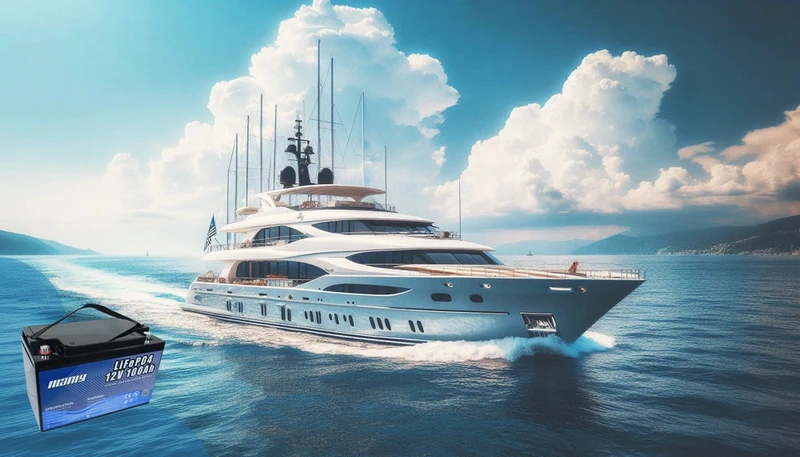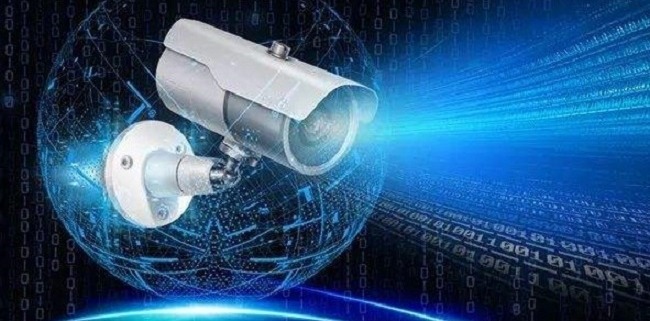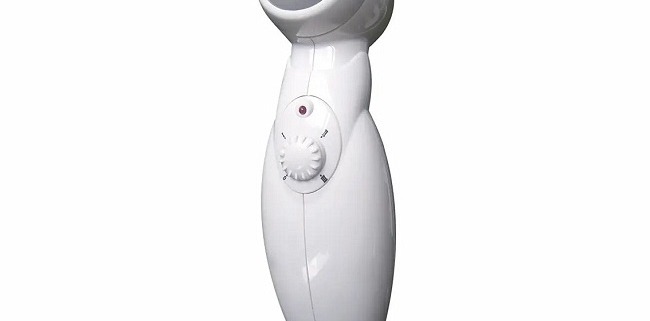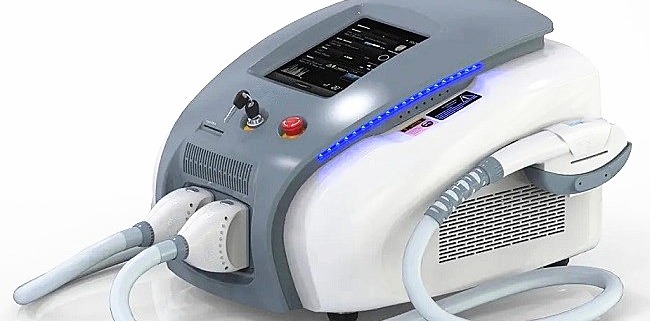Charge a Marine Battery: Step-by-Step Guide
Table of Contents
- Charge a Marine Battery: Step-by-Step Guide
- Understanding Marine Batteries
- Preparing to Charge Your Marine Battery
- Step-by-Step Guide: How to charge a marine battery
- Best Practices for Marine Battery Maintenance
- Conclusion
- FAQ
- Hot Resarch
- What is a security system
- The efficacy of beauty equipment
- Classification of technical principles of beauty equipment
Marine batteries are the lifeblood of any boat—they power your engine, lights, gauges, and all the essential onboard electronics. Without a healthy battery, your boat is a pretty shell on the water. In this article, we dive into the burning question: how do I charge a marine battery? We’ll explore everything from the ins and outs of battery types to a step-by-step guide on charging. Plus, we’ll compare the advantages of a marine li ion battery with those of traditional marine deep cycle batteries. Let’s get started on this exciting journey to keep your boat powered and your adventures safe!
Understanding Marine Batteries
1. Types of Marine Batteries
Not all marine batteries are created equal. When it comes to powering your boat, you typically have three choices:
- Starting Batteries: These provide that quick, powerful burst of energy to get your engine running, but they’re not built for long-term power.
- Deep Cycle Batteries: Designed for sustained power delivery, these batteries keep your lights, electronics, and other accessories humming for hours.
- Dual-Purpose Batteries: These offer a blend of starting and deep cycle capabilities, which can be handy on smaller vessels with limited space.
Most boaters prefer marine deep-cycle batteries for extended use and reliability. These batteries handle deep discharges better, ensuring their boats stay powered even during extended trips.
2. Battery Chemistry and Technology
Battery chemistry plays a pivotal role in performance and longevity. Traditional chemistries—like lead-acid, AGM, and gel—have long been the go-to options. However, a modern contender is changing the game: the marine li ion battery.
Why choose a marine li ion battery? Because it’s lightweight, lasts significantly longer, and requires minimal maintenance compared to conventional batteries. Think of it as upgrading from an old clunker to an award-winning sports car in the world of batteries. This cutting-edge technology improves performance and enhances safety and efficiency, making it a popular choice among serious boaters.
Learn more about lithium-ion battery technology on Wikipedia.
Preparing to Charge Your Marine Battery
Before you begin the charging process, a little preparation goes a long way toward ensuring safety and efficiency.
1. Assessing Your Battery’s Condition and Type
First, give your battery a thorough once-over. Check its age, inspect for any signs of corrosion, and verify the battery type. Understanding whether you’re dealing with a marine li ion battery or deep cycle batteries is crucial—it influences which charger to use and how you’ll maintain it. A well-maintained battery lasts longer and performs better when you charge a marine battery.
2. Choosing the Right Charger
Next up is selecting the correct charger. You generally have two main options:
- Onboard Chargers: Permanently installed on your boat, these chargers make it super convenient to power up as long as you have access to a standard outlet.
- Portable Chargers: These allow you to charge your battery wherever you are, which is ideal for smaller boats or when space is at a premium.
Make sure the charger you choose matches your battery’s chemistry and voltage. This step is especially important for those opting for a marine li ion battery or deep cycle batteries—using the wrong charger can lead to underperformance or even damage.
3. Safety Precautions Before Charging
Safety should always be your top priority. Here are some key precautions:
- Work in a Safe Environment: Charge your battery in a well-ventilated area and ensure the temperature is within the manufacturer’s recommended range.
- Clean Battery Terminals: Dirty or corroded terminals can interfere with the charging process, so give them a good clean before you connect anything.
- Gear Up: Wear protective gear such as gloves and eye protection to prevent mishaps.
- Follow Manufacturer Guidelines: Always adhere to the specific recommendations provided by your battery and charger manufacturers.
By taking these simple steps, you will ensure your safety and optimize the performance and lifespan of your battery.
Step-by-Step Guide: How to charge a marine battery
Let’s get into the nitty-gritty of charging your boat’s power source. Follow these steps, and you’ll power up like a pro in no time!
1. Cleaning and Inspecting Battery Terminals
Before you plug anything in, clean your battery terminals. Dirty or corroded terminals can prevent your charger from doing its job, and no one wants a slow charge on a hot day!
- Tip: Mix some baking soda with water, scrub gently with a soft brush, and wipe dry.
- Why It Matters: Clean connections ensure that every bit of energy flows efficiently when you charge a marine battery.
2. Connecting the Charger
Now, let’s hook everything up:
- Positive (Red) Cable: Firmly attach this to the positive terminal.
- Negative (Black) Cable: Connect it securely to the negative terminal.
Double-check your connections, whether using a smart charger that adjusts the current automatically or a trusty manual charger. This step is vital, especially when working with a marine li ion battery or marine deep cycle batteries. Once the cables are locked in, plug in your charger and power it up. Easy as pie, right?
3. Monitoring the Charging Process
Keep an eye on your battery as it charges—this is where modern tech shines:
- LED Indicators: These give you a quick look at the charge level.
- Smart Apps & Timers: Many chargers have apps or built-in timers to let you know when you’re full.
By actively monitoring, you prevent overcharging and ensure your battery gets the right amount of juice.
4. Disconnecting the Charger Safely
When your battery is fully charged, it’s time to disconnect—but do it safely:
- Unplug the Charger: Always start by unplugging the charger from the wall.
- Remove the Negative Cable: Disconnect the black cable first.
- Disconnect the Positive Cable: Finally, remove the red cable.
Following this order helps prevent accidental short-circuits and keeps your battery in shape.
Best Practices for Marine Battery Maintenance
Regular maintenance keeps your battery performing like a champ. Here’s how to keep those power levels up!
1. Maintenance Tips for Prolonging Battery Life
- Routine Inspections: Check for any signs of corrosion or wear on the terminals.
- Clean Regularly: A little cleaning goes a long way in ensuring your connections are solid.
- Water Topping: Top up with distilled water when needed for lead-acid batteries.
By following these habits, you’ll always be ready to charge a marine battery and hit the water confidently.
2. Optimizing Charging Cycles
Different batteries have different needs:
- For a marine li ion battery: Enjoy the benefits of minimal maintenance and the ability to handle deeper discharges.
- For marine deep cycle batteries: Stick to regular, shallow discharges to keep them healthy over the long haul.
Tailoring your charging cycle to the specific battery type maximizes performance and extends lifespan.
3. Troubleshooting Common Issues
Even the best-maintained batteries can run into issues. Watch out for:
- Overcharging: This can overheat your battery and cause damage.
- Undercharging: Leaves your battery underpowered.
- Terminal Corrosion: Hinders efficient energy transfer.
If you notice any problems, check your charger settings and ensure you use the right equipment for your battery type.
Conclusion
1. Recap of Key Points
We’ve broken down how to charge a marine battery step by step—from cleaning and connecting to monitoring and safe disconnection. Each stage is crucial for keeping your boat’s power system in peak condition.
2. Final Tips for Maintaining Both Marine li ion battery and marine deep cycle batteries
Whether you opt for the cutting-edge marine li ion battery or the reliable marine deep cycle batteries, proper care and regular maintenance are your best friends. Tailor your charging habits to your battery’s specific needs, and you’ll enjoy award-winning performance on every trip.
3. Encouragement to Follow Best Practices for Reliability on the Water
Stick to these best practices, and you’ll be cruising with confidence. Keeping your battery in prime condition means fewer hassles and more time enjoying your time on the water. Let’s keep those adventures rolling, shall we?
For more detailed battery care tips and industry insights, check out reputable sources like the U.S. Department of Energy or Wikipedia’s battery technology page. Happy boating!
FAQ
1. Can you charge a marine battery with a regular charger?
While you technically can, it’s not recommended. Marine batteries require a charger that matches their specific chemistry and voltage. A regular charger may not provide the proper charging profile, leading to undercharging, overcharging, or even damage over time.
2. What is the best way to charge a boat battery?
The best way is to use a charger specifically designed for your battery type. Follow a step-by-step process: clean and inspect the terminals, connect the positive and negative cables correctly, monitor the charging process using bright indicators, and disconnect safely when fully charged. This ensures efficiency and longevity.
3.What kind of charger do I need for a marine battery?
You need a charger that is tailored to your battery’s chemistry—whether it’s a marine li ion battery or marine deep cycle batteries. Look for chargers with the correct voltage, charging algorithm, and safety features like automatic shut-off and intelligent monitoring for optimal performance.
Hot Resarch
Marine Battery Battery Manufacturer Lithium Battery
Hello
The full name of the security system is the security system, which is a system composed of security products and other related products, such as intrusion alarm systems, video security monitoring systems, access control systems, explosion-proof security inspections, etc.; or these systems are combined as subsystems or Integrated electronic system or network.
The security system is mainly composed of three parts, namely access control system, closed-circuit monitoring system, anti-theft and patrol system. With the continuous improvement of people’s requirements for the environmental quality of living, office and other areas. Intelligent security systems are becoming more and more popular.
1. Improve relaxation and puffiness, small face effect
2. Improve skin transparency and elasticity
3. Prevent wrinkles
4. Whitening, preventing spots
5. Add moisture
6. Promote metabolism
7. Shrink pores and treat acne
1. Current, electric pulse mode:
Using micro-current pulse modulation technology, it acts on human skin, meridians and acupuncture points to achieve the purpose of firming, wrinkle removal and beauty. These devices include medium and low frequency therapeutic instruments and meridian instruments in the rehabilitation medical industry, as well as HPT health preservation instruments, acid discharge instruments, and 3D/5D carving instruments, which are popular this year.
2. Micro vibration method:
Using mechanical vibration and voltage stimulation, the human skin tightens, increases its own elasticity, and enhances the metabolism of skin cells, such as the vibration massage head of the Oxygen Bubble.
3. Lighting method:
Using the different mechanisms of action of various colors of light on skin tissue, it can improve the condition of human skin, calm and reduce inflammation, and eliminate redness and swelling. Typical representatives are photorejuvenation instruments, spectrometers, etc. There is also a type of skin detector, which uses a specific spectral illumination imaging method for detection and analysis, mainly referring to the smart mirror series of instruments.
4. Ways to raise body temperature:
Using the principle of heat radiation or heat conduction, the body temperature is raised and the metabolism of the body is accelerated. Representative equipment wax dissolving machine, red light irradiator, moxibustion instrument, etc.
5. Laser Beauty:
Based on the principle of selective absorption of light and the principle of photothermolysis, it destroys hair follicles and smashes pigments. It is mainly used in hair removal, eyebrow washing, tattoo removal, spot removal, pigment lightening, mole removal, elimination of cover, sheath, wart, etc. But with the continuous advancement of technology, there are strong pulsed light represented by IPL\E light, the typical equipment is OPT hair removal, and semiconductor hair removal with a specific wavelength of 808nm; 980nm wavelength, to remove red blood; there is also continuous reduction of pulse width and increased energy. The new Q-switched lasers, especially the picoseconds and super-picoseconds that have appeared in recent years, use the photoshock effect to reduce the skin damage caused by the photothermal effect and greatly improve the effect of laser treatment.
6. Ultrasonic method:
Using the characteristics of high-frequency vibration of ultrasonic waves, it acts on the human skin, causing the skin to produce high-energy movement to achieve the effect of shrinking the skin. Now it is mainly used to assist the introduction of products and speed up the absorption, so it is almost standard for all kinds of skin management equipment.
7. Electron and ion introduction:
By using the physical penetration and introduction of electronic current, the related beauty products and drugs are introduced into the skin to achieve the effect of beauty. For example, the ion bar and ion clip of the Korean comprehensive skin management instrument can not only help to export blackheads, but also accelerate the introduction and absorption of essence.
8. Radio frequency effect:
Using high-frequency shock waves to act on the surface of the skin, the skin shrinks to achieve the effect of wrinkle removal and skin tightening. Radio frequency is widely used, and different instruments emit radio frequency of different frequencies. For example, the 40.68MHZ thermal lift is mainly for lifting and tightening, and the 5M micro-motion radio frequency is mainly for product introduction and promotion of absorption.
9. Water bath therapy:
Use the water flow, water temperature, and the affinity between water and people to achieve the purpose of whole body beauty. This type of equipment is more healthy and popular in winter. There are fumigation cabins, drifting cabins, etc., most of which will be combined with fumigation.
10. Pure oxygen injection:
Special equipment is used to add oxygen to a certain pressure, which acts on human skin tissue and increases the oxygen intake of cells and tissues. There are both specialized oxygen injectors on the market, as well as oxygen lances integrated in small air bubbles.
11. High-speed penetration:
Similar to the above oxygen jet, but this type of instrument purifies and pressurizes the liquid product to form a high-speed gaseous state, breaks the skin surface barrier, and directly enters the skin, which is more conducive to absorption. Mainly refers to non-invasive water light and so on.






